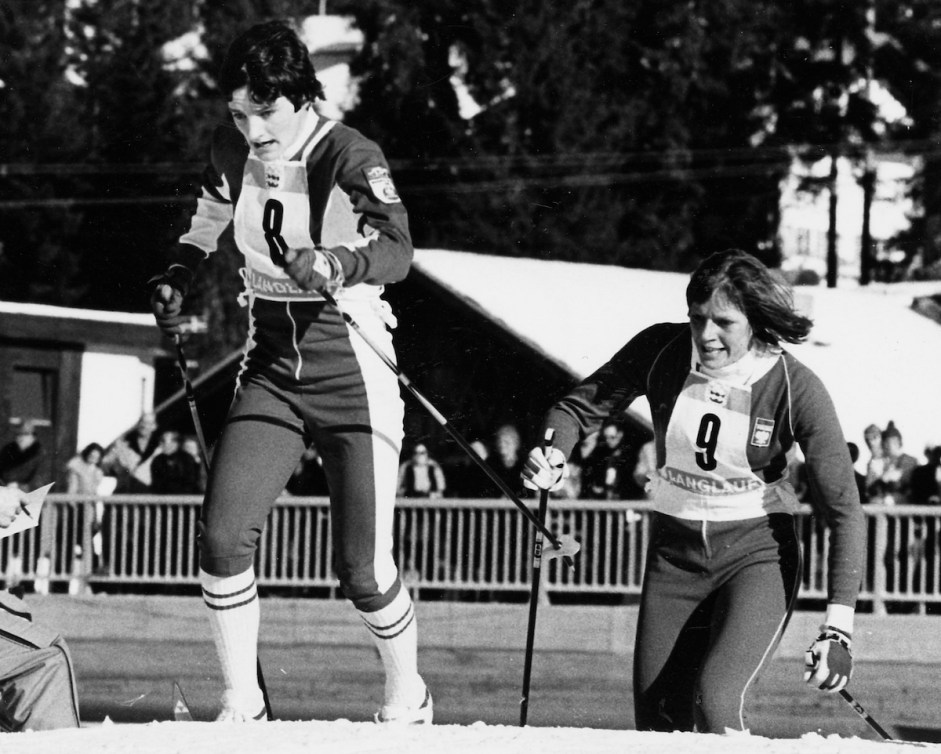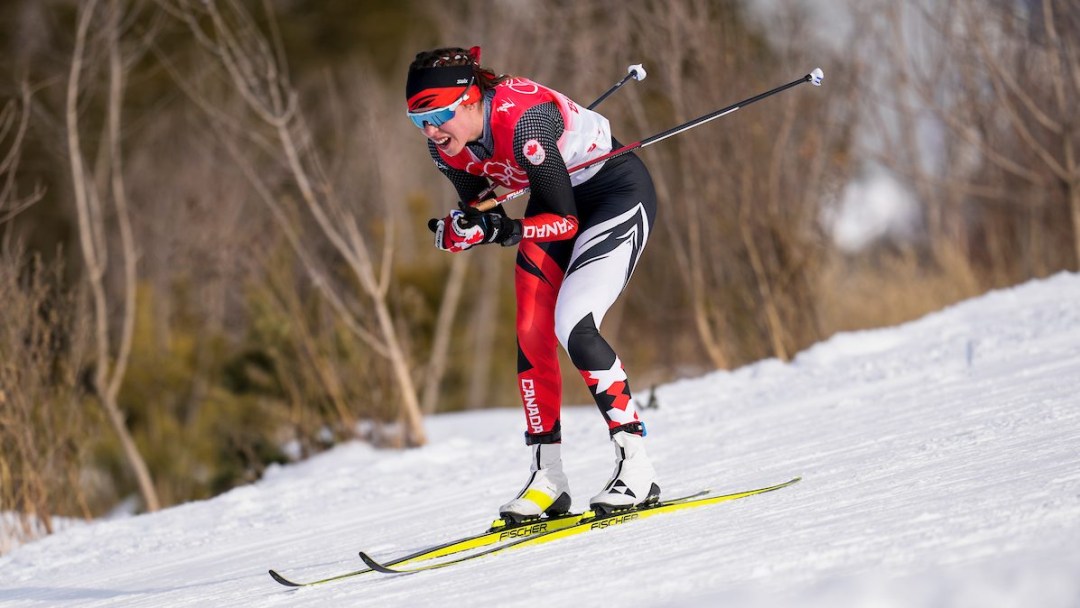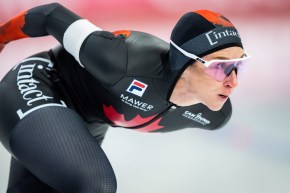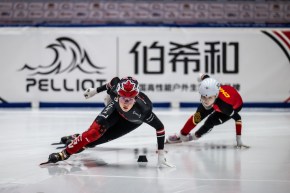Milano Cortina 2026 set to have first gender-equal Olympic racing programme for cross-country skiing
At Milano Cortina 2026, men and women cross-country skiers will race in events of the same distances for the first time ever in Olympic competition. That’s big.
Previously, the longest race distance for women was 30 kilometres, versus 50 kilometres for men. At Milano Cortina 2026, both men and women will race in separate 50km mass start events.
Other changes in distance are more subtle, with several women’s events becoming slightly longer, and some men’s events coming down a little in length to meet in the middle. For example, the women’s skiathlon was previously 15 kilometres (7.5km of each technique—classic and freestyle), while the men’s distance was 30 kilometres (15km of each technique). Both genders will now race a total of 20 kilometres (10km each of classic and freestyle). The women’s relay was previously 4 x 5km, versus the men’s 4 x 10km. Both genders will now race 4 x 7.5km relays.
Before we get too far into cross-country skiing, let’s talk about distance running, as the two sports share similarities, not just as endurance sports, but also in the cultural narratives that they have faced on the path to gender equity.
A short history lesson
The marathon is synonymous with the Olympic Games. The men’s marathon has been contested at every modern Olympic Games, starting in 1896, and has a special place in the Olympic programme. Until Paris 2024, the men’s marathon always took place on the final day of the Games, with the medallists receiving their medals at the Closing Ceremony as a way to respect the event’s deep connection to Olympic history.
The Paris 2024 Organizing Committee made an important decision signalling their commitment to gender equity by placing the women’s marathon, instead of the men’s, on the final day of Games, retaining the special status of the event. For just the second time, the medallists of both marathons received their honours at the Closing Ceremony.
Back to the original point—while men have had the opportunity to compete in the marathon (42.195km) since 1896, women have only had the opportunity to race distances longer than 200m since 1960.
Women competed in the 800m when women’s athletics events were first added to the Olympic programme in 1928. However, the male-dominated media and sport administrators had preconceived notions that women were too fragile to run this distance, worrying that it would damage their reproductive systems.
Despite what actually happened on the track (all of the athletes finished the race), the media reported that several women collapsed and could not finish. The result was that women were banned from competing in any races over 200m for more than 30 years. The first women’s Olympic marathon was not contested until 1984, 88 years after the men.
Okay, back to skiing.
The mass start event in cross-country skiing is the longest event on the Winter Olympic programme. Like the marathon, it always takes place at the end of the Games. As of PyeongChang 2018, the medals for both the men’s and women’s the mass start have been awarded at the Closing Ceremony.
As with the marathon, men have competed in cross-country skiing since the first Olympic Winter Games at Chamonix 1924, where the races were 18 and 50 kilometres in distance. A men’s relay was added at Garmisch-Partenkirchen 1936.
Twenty-eight years after the men, women had their first opportunity to compete in Olympic cross-country skiing in 1952, with a 10 kilometre race. At Cortina d’Ampezzo 1956, a women’s relay was added.

It took 60 years for men and women to compete in an equal number of Olympic cross-country skiing events at Sarajevo 1984. The men raced over 15km, 30km, and 50km individually. The women’s individual races were 5km, 10km, and 20km. Same number of events, but a huge disparity in distances. The women’s mass start was increased to 30km in 1992, and had remained 20 kilometres shorter than the men’s mass start since then. Until now.
Haunted by perceptions of the past
When women were barred from racing over 200m on the track after the 1928 Games, the reasoning was explicit—that women, physiologically, should not race long distances.
That is not an argument that holds up today, from a scientific or a cultural standpoint. And yet many university, national, and international levels of competition have remained haunted by this notion, in the form of shorter race distances for women.
Canadian cross-country skier Katie Weaver is aware of how that sort of haunting impacts athletes, consciously or not.
“I think there has been a psychological shift in me. That, of course we can do 50k, it’s not us being women that is a barrier to us doing that extra 20 kilometres in the race. It’s just society’s idea that maybe we couldn’t. So that barrier being addressed is something that’s really special and exciting,” Weaver said.
How did this change come about?
In 2020 a group of American collegiate coaches, led by Molly Peters, began organizing to push for gender parity in American cross-country skiing and running through a group called The Equal Distance Team. What started as a domestic push for distance parity soon reached higher levels of sport administration.
In the spring of 2022, the International Ski and Snowboard Federation (FIS) voted by a 57% margin to equalize World Cup distances for cross-country skiing. Though not exactly a resounding majority victory, the decision had the domino effect of encouraging the Olympic, world championship, and NCAA programmes to follow.
In an interview in 2022, FIS Race Director Pierre Mignerey discussed the vote: “In 2022, we should not have to discuss anymore if women are capable of racing the same distances, having the same rules and using the same courses as men. The discussion in the CCC (Cross-Country Committee) was never about if women are capable of racing the same distances and course profiles, but about how to implement it, for example into our sports community or into a TV product.”
Looking to the future
Weaver says that Milano Cortina 2026 will be a historic event for women’s skiing, and one that she’s excited about, regardless of whether or not she gets to race that distance for Canada.
“I’m going to be really excited to be involved in a championship that has that monumental change,” Weaver said.
Teammate Xavier McKeever is also excited about the distance changes, though as a male skier, the changes in his own programme are more slight.
“I think it’s a good change. We’re always talking about gender equity in sports and I feel like having similar distances or equal distances is a step towards that. And I think it was a step that was needed,” said McKeever. “I think it’s been really well received, especially on the World Cup circuit and our first world champs with that this past year. I feel like overall it’s a really cool moment to see.”
The 2025 FIS Nordic World Ski Championships were the first to feature a 50 kilometre race for women. Thanks to rain ahead of the race, snow conditions were very tough in Trondheim, Norway.
But every athlete finished that race. Perhaps they had 1928 in mind.
The men’s 50 kilometre race, which took place a day earlier, featured better snow conditions. Four athletes dropped out.
Peters and The Equal Distance Teams’ advocacy had great success when it came to cross-country skiing, however their work for gender parity in American university cross-country running has thus far seen proposals for a gender equal eight kilometre race distance rejected by the NCAA Div I, II, and III Cross Country Committees. (Canadian university athletes have raced a gender equal distance of eight kilometres since 2020).
There is no doubt that Milano Cortina 2026 will be a historic Games for cross-country skiing, and mark an important milestone in the journey towards gender equity. As we celebrate those milestones, it’s vital to be cognizant of those cultural hauntings of the past.










